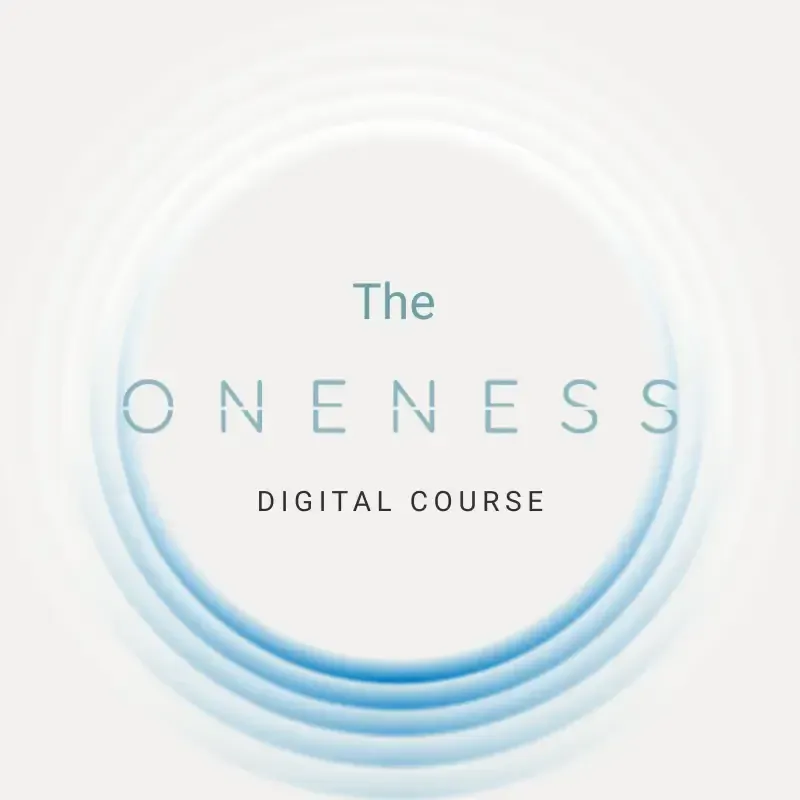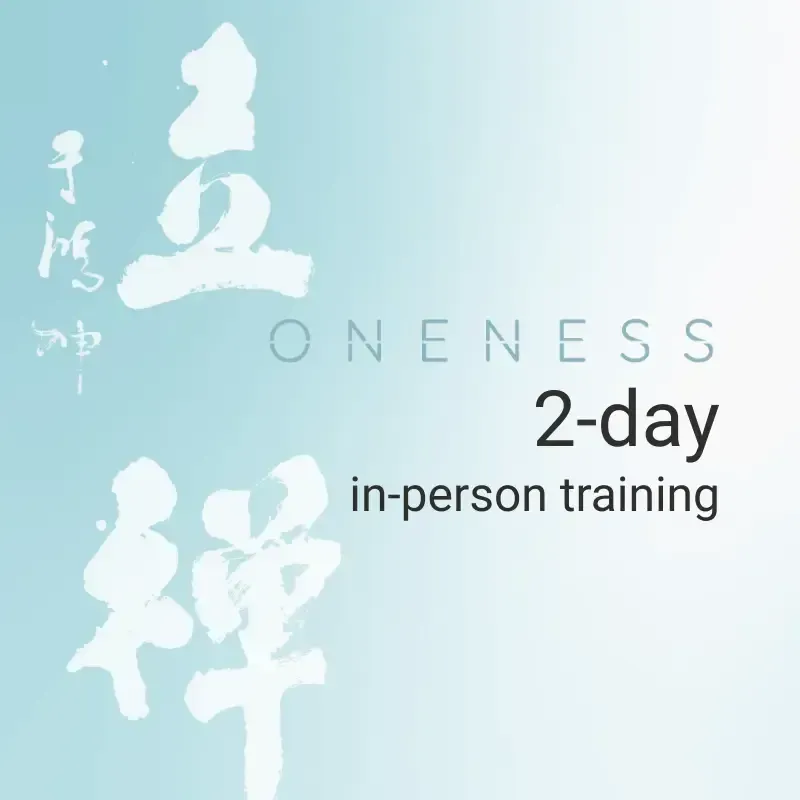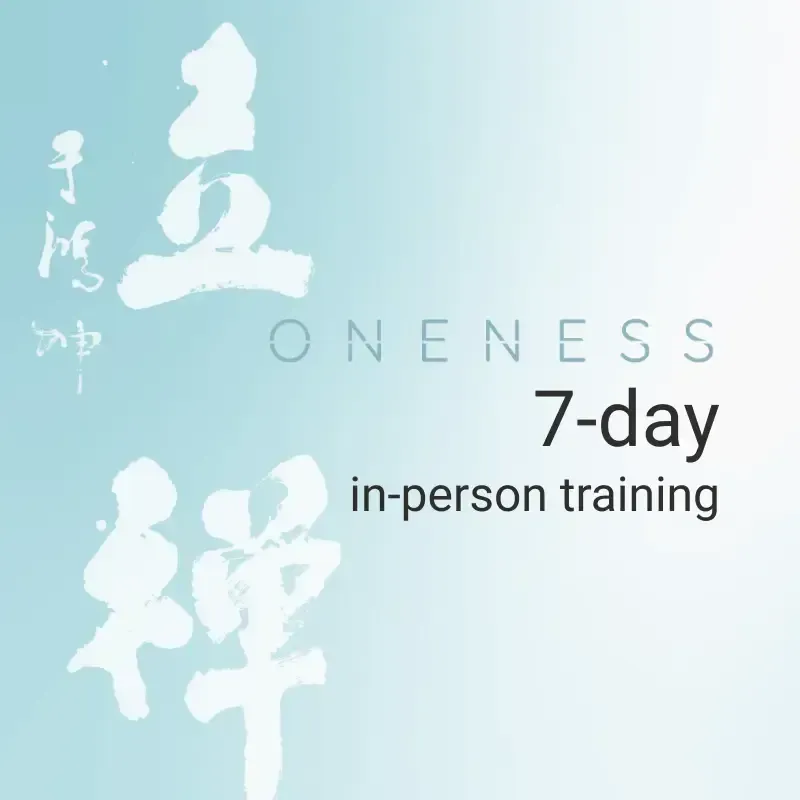Oneness Practice: The Beginner’s Essentials
The digital course is almost complete, with only a final touch remaining. Many of you will receive it and can start to practice from next week. Here are some tips for our beginners.
Oneness Practice: The Beginner’s Essentials
Educational guidance only; not a substitute for medical advice.
If you have any previous medical conditions, you must consult your doctor before starting this practice.
Introduction — Allow, Don’t Force
When you begin Oneness Standing, you are entering a practice that restores what is natural. The most important, counter-intuitive truth is this: the work is not to do more, but to allow more.
Think of a tree: roots resting into the earth, crown opening to the sky. It doesn’t try to be a tree; it simply is. Oneness is the same: its strength comes not from striving but from returning.
A Note Before You Begin
Almost everyone will experience some reactions as circulation strengthens. For some, these reactions are mild and pass quickly; for others, they are stronger and last longer. This is natural and depends on personal condition—old injuries, vitality, stress, diet, sleep, and lifestyle.
That’s why the first month often feels like a challenge. There is little “spa-like” enjoyment, more discomfort and tests. If students quit, it’s most often during this stage. If you continue practicing correctly, the body adjusts, reactions pass, and the practice becomes deeply enjoyable—like a daily spa from the inside out.
I. Core Method: Why “Don’t Try Too Hard” Matters
Excess effort creates the very tension we aim to release—tight muscles, pressured breath, restless mind. Oneness seeks looseness, stillness, and natural flow.
Three common over-efforts—and what to do instead:
Forcing a “perfect” pose → Better way: Imagine “as if sitting, not sitting.” Keep weight stable, skeleton upright, and let gravity settle through the feet.
Controlling the breath → Better way: Forget the breath. As the body loosens, breathing will naturally become deep, long, fine, and even.
Fighting discomfort → Better way: Micro-adjust. Raise stance slightly; imagine softening the tense area. Mild trembling isn’t failure—it’s energy moving.
Quick self-check: you did it right if…
You finish feeling warm and settled.
Breath felt natural (you forgot about it).
Face/jaw/shoulders softened at least once.
Tomorrow you feel as good or better.
II. Why Oneness May Feel Different
Many students are surprised by the intensity of sensations in Oneness. Other practices such as taiji, yoga or meditation often emphasize awareness, calm, or gentle movement. Oneness shares these values but also emphasizes something unique: a direct awakening of powerful internal energy together with awareness.
Awareness steadies the mind and clears distraction.
Energy—activated through upright posture, release, and gravity—circulates strongly through the body.
This combination of awareness plus energy makes Oneness especially effective for deep healing. Energy opens blockages, activates dormant areas, and fuels the body’s natural capacity to restore itself.
As Grandmaster Yu has emphasized:
“You may not find another practice as effective, as direct, and as simple.”
That is why Oneness can bring stronger reactions—heat, trembling, aching, digestive activity—than some expect. Most reactions are temporary, and your control knobs are simple: stance height and duration
III. What Causes These Reactions? (Three Honest Sources)
Healthy circulation of energy & blood (benign, expected)
Feels like: warmth, light sweat, ache/pressure that eases afterward, mild trembling, stomach sounds, more saliva.
Why: upright relaxation + gravity awaken circulation; awareness allows reorganization.
What to do: Adjust and continue. These are safe signs.Wrong practice or over-effort (harmful strain)
Feels like: sharp, stabbing joint pain, pressured breathing, palpitations, dizziness, “seeing stars,” lingering cold/numb.
Why: stance too low/tense, knees collapsing past toes, forced spine position, “trying” the breath, gritting through pain.
What to do: Pause and reset. Sit, sip warm water. Next time: higher stance, shorter time, softer shoulders/jaw, clear feet.
Important note: If ignored, these strains may worsen into injury, so they must be corrected immediately.Old pain or deep issues resurfacing (repair in progress)
Feels like: deeper ache at an old injury site, often followed by ease; overall function improving afterward.
Why: increased circulation “finds” and clears long-dormant blockages.
What to do: Lighten the load. Shorten duration, raise stance, observe patiently.
IV. Signals You Can Trust (Keep Going)
Legs aching, numb, swollen, trembling: muscles awakening; blocked flow opening. Adjust stance slightly and continue.
Local warmth or light sweating: circulation rising; body is “switching on.”
Burping, gas, or stomach sounds: digestion activating.
More saliva: “golden nectar,” a sign of balance; swallow slowly.
V. Caution Signs — Pause and Reset
Palpitations, shortness of breath, dizziness, faint feeling: stance too low/tense. Pause, sit, sip warm water. Next time: higher stance, shorter time.
Sharp, stabbing joint pain (knees, lumbar): posture error. Pause now; correct knees (soft bend, back-sit feeling), spine (upright, not rigid or collapsed).
Coldness or numbness that lingers: circulation compromised or chilled. Pause; rub warm or soak feet.
Extreme irritability or mental agitation: end practice for today. Walk, calm down, return later or tomorrow.
VI. Preconditions & Timing
Severe hypertension or heart disease: use high stance, short sessions (start with 3–5 minutes), ideally with guidance.
Lumbar disc herniation or knee problems: you must consult your doctor and a skilled teacher; avoid aggravating positions.
Very weak or recovering from serious illness: rest first; you may practice reclined or supported, lightly focusing on the lower abdomen (dantian).
After a heavy meal (within 1 hour) or when very hungry: do not practice.
Severe weather (thunderstorms, strong winds): unsettles beginners; not ideal.
VII. Solution — Because Self-Healing Is Personal
Oneness is self-healing; therefore everyone’s journey is different. For beginners, keep it simple:
Do it right. Prioritize alignment and relaxation over depth or duration.
Don’t try. Replace force with allowing.
Don’t set a goal. No chasing minutes or sensations.
Add time gradually. When you finish feeling warm, settled, and genuinely comfortable, add a little next time.
A note on pace: Early discomfort can normalize; capacity expands when you stop forcing and keep the process gentle and correct. Healing happens when the practice is correct and gentle. Forcing yourself only delays progress.
LD’s experience (an honest snapshot)
At the start: His heels ached and his lower back felt tight. After a short walk, both eased.
During a 7-day breakthrough (8–9 hours/day): His heels felt like knife-cutting for hours. By day 5, he could stand continuously the whole day, even with lingering heel ache.
After returning home: A 45–60 minute daily practice felt easy—like a deep spa every day.
Takeaways: Retreat intensity is optional. Most people progress well at home with 10–30 minutes and gentle increases. LD’s retreat experience is not a beginner’s goal—it’s simply an example of how the body can adapt
VIII. Practice Progression (Beginner Recommendation)
Start light. If you can only stand 5 minutes, do 5 minutes — twice daily.
If 15 minutes feels easy and pleasant, practice 15 minutes (enjoy it).
Week 1
Days 1–3: 5–10 minutes, morning & afternoon.
Days 4–7: If you feel good (warm, settled, no red flags), increase to 10–15 minutes, morning & afternoon.
Weeks 2–4 (First Month)
Aim for 15 minutes, twice daily (morning & afternoon).
If you genuinely feel good and enjoy it — with no red flags — you may naturally explore 20–30 minutes.
If 30 feels heavy the next day, return to 15 + 15. Progress comes from consistency, not heroics.
Month 2 and Beyond
Two normal paths:
Path A: You start looking forward to practice. Even if a spot still feels a bit achy or tight, it feels natural; reminders aren’t needed.
Path B (also normal): Feels similar to month one — some calm, a bit more freshness. Keep it steady.
Increase only when sessions end with real ease (warm, settled, bright).
Most people thrive at 20–30 minutes once or twice daily. Choose what fits your life.
How to know you’re on track
Your whole body feels a little better overall week by week (sleep, mood, patience, warmth in hands/feet, steadier mind).
As Grandmaster Yu put it: when you feel your heart growing bigger (more spacious, patient, kind), you’re headed in the right direction.
Always remember
Use your control knobs: stance height and duration.
No chasing minutes or sensations.
If in doubt, go lighter and ask for guidance.
IX. When You’re Unsure — What To Do
Safety reset (do this first)
Raise the stance, shorten the time, relax the face/jaw/shoulders, feel the feet.
Re-check the Signals / Caution Signs. If anything feels unsafe, stop now.
Ask for support
Post your question in Q&A with a brief summary (how long you stood, stance height, what you felt, when it started).
Send practice photos from 4 angles — front, back, right, left — to your coach for form check.
Consult your doctor
If you have a previous medical condition, or you experience caution signs (sharp joint pain, palpitations, shortness of breath, dizziness, lingering cold/numb), or symptoms persist — consult your physician before continuing.
Keep a simple log (optional but helpful)
Record date, stance/time, sensations, and how you felt after practice. Patterns help both you and your coach.
Disclaimer
This guide is for educational purposes only. It does not replace medical advice, diagnosis, or treatment. If you have a previous medical condition, you must consult your doctor before practicing. Always work within your comfort zone, and stop immediately if you feel unwell or if pain persists.




